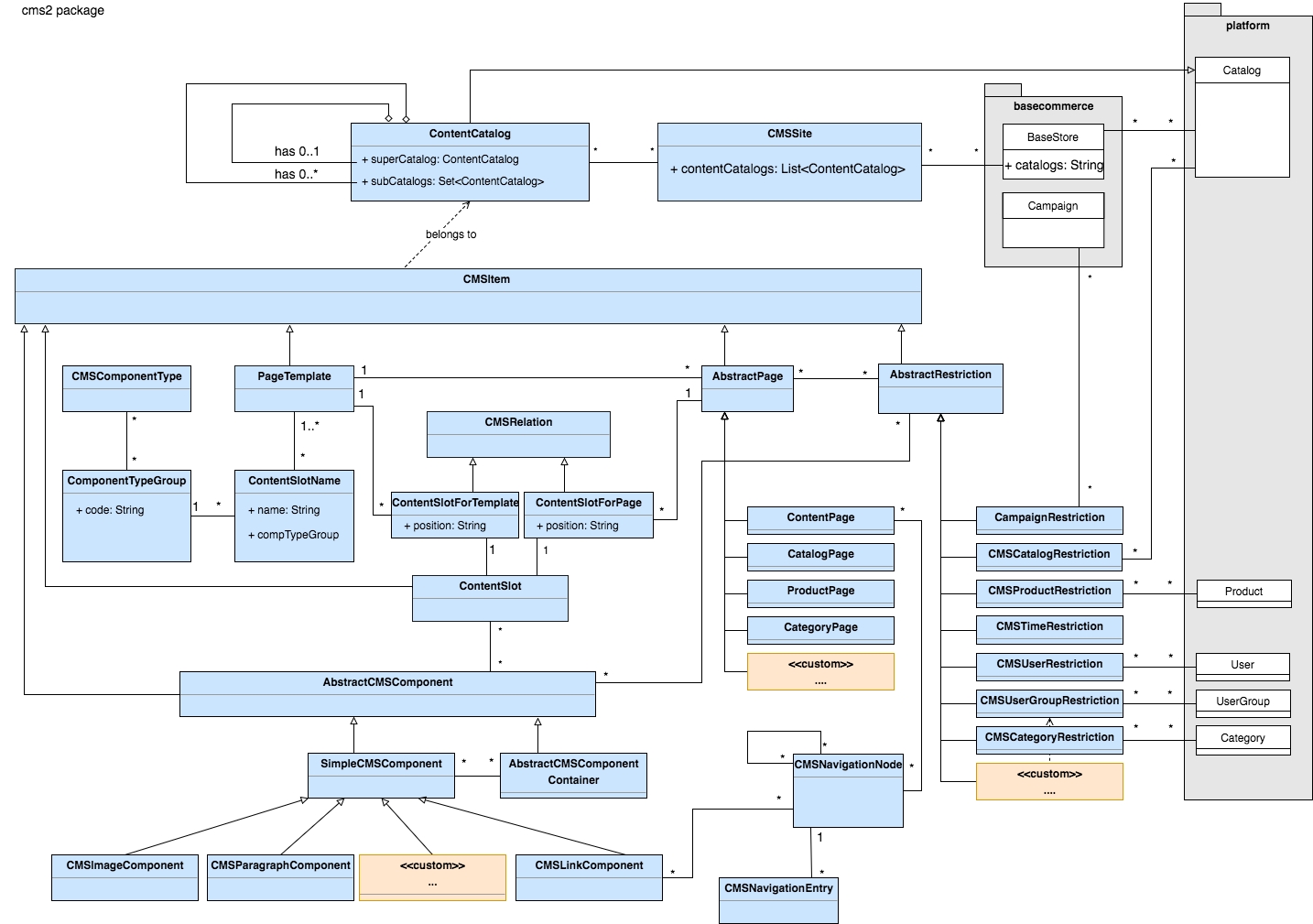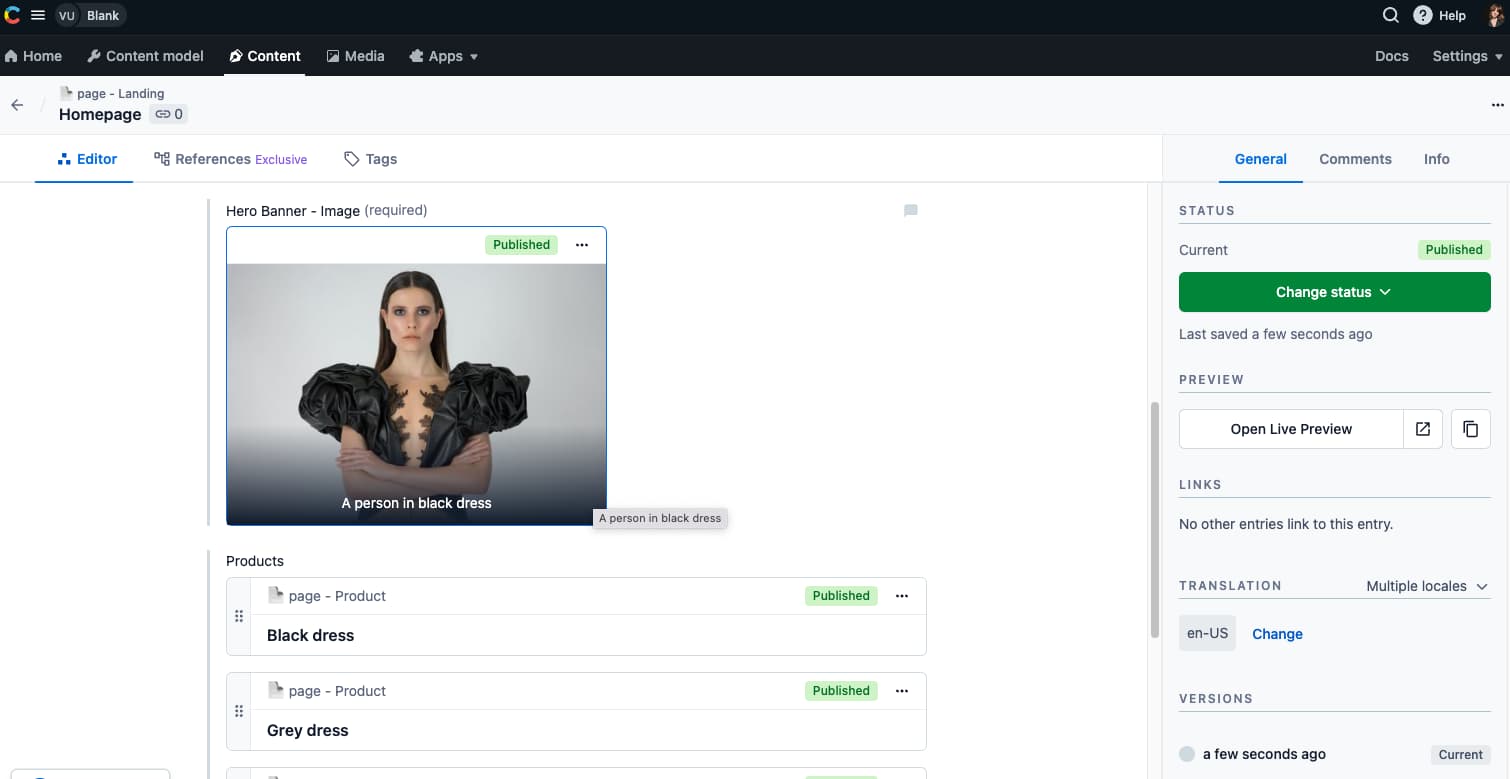Explore by Category:
eCommerce
CMS for SAP Commerce Cloud - Is SmartEdit the Best Choice? Alternatives Included
This article was written with James Johnstone , Lead SAP Commerce Solution Architect at Brave Bison .
Businesses constantly seek innovative solutions to improve their online presence and enhance user experiences. In fact, the foundation upon which the e-commerce sector was built is one such solution. And it is, of course, SAP SmartEdit.
This article is a deep dive into SmartEdit, shedding light on its functionality, advantages, disadvantages, and alternatives available in the market. Why? Because you can't make an informed decision for your organization's web content management needs without having a comprehensive understanding of all the factors in play first.
That said, let's start with the basics.
What is SAP SmartEdit?
SAP SmartEdit is a content management system (CMS) that facilitates the creation and management of content within the SAP Commerce Cloud environment. It was once hailed as a versatile tool capable of handling various content-related tasks. Its strengths lay in its tight integration with SAP's data model, allowing users to effortlessly access product data, images, and categories to enrich their content. This seamless connection reduced the need for complex data feeds throughout the architecture.
SAP SmartEdit: Advantages and disadvantages
Pros of SAP SmartEdit | Cons of SAP SmartEdit |
Integration with SAP data model: | Complexity for advanced use cases: SmartEdit's power and flexibility come with complexity, making it challenging to handle advanced content management tasks. |
Accessible to non-tech teams: The WYSIWYG editor makes content creation accessible to non-technical users, reducing reliance on developers. | Outdated data model: The reliance on an older data model limits SmartEdit's adaptability to the modern e-commerce landscape. |
Streamlined Content Management: Users can lay out components on pages and preview the final result in real-time, simplifying content management. | Inadequate A/B testing and personalization: SmartEdit lacks the advanced tools and capabilities needed for effective AB testing and hyper-personalization. |
Let's take a closer look at these.
A quick look into the past - WCMS cockpit
For those of you familiar with SAP Commerce Cloud, the name "WCMS cockpit" might sound familiar. This predecessor of SmartEdit was replaced together with SAP Commerce, version 1905.
New SmartEdit modules provide a sleeker and more user-friendly interface, making it easier for editors to navigate and manage content. Its flexibility allows businesses to adapt and scale their CMS items and page management processes according to their requirements.
"SmartEdit was introduced as the new CMS years ago, replacing the previous "WCMS cockpit", but it was at that point the data model stayed the same. They've made additions and tweaks and added new components and new functionality to it.
But at its core, it's that same 10-plus-year-old data model and it's in my opinion it's not really suitable for the modern world in the same way that a lot of headless CMSs available on the market are." - James Johnstone
SmartEdit for basic content management tasks
For companies with basic content management needs, SmartEdit can still shine. It allows users to perform essential tasks such as editing text, placing components on pages, creating product carousels, and adding products. The simplicity of these functions can be a godsend for businesses looking for a no-nonsense solution that directly taps into the SAP data they already own.
However, as the digital landscape evolves, it's clear that basic content management is no longer enough to stay ahead of the competition.

SmartEdit data model from SAP's documentation
SmartEdit for advanced edit use cases
While SmartEdit offers a user-friendly interface and a What You See Is What You Get (WYSIWYG) editor, it falls short when users attempt more advanced projects. As James noted:
"If you try to do anything beyond the basics, you get confused. ... There is power there, but increasingly these days there's the secret source of eCommerce website - the content. Ability to personalize it, ability to do things like AB testing. And this is a part, where SmartEdit is struggling."
Content localization with SmartEdit out-of-the-box modules
While SmartEdit has an edge in applications that involve out-of-the-box localization, it's important to acknowledge that some competing CMSs face challenges in this area. Multilingual content management can be slow in certain systems, and efforts to address these issues can sometimes feel like workarounds rather than proper solutions.
In contrast, SmartEdit's localization features have been praised for their efficiency and effectiveness. Users have noted that SmartEdit's approach to handling multiple languages is more streamlined and user-friendly than some alternatives. It positions SmartEdit as a reliable choice for businesses with global reach.
Is SmartEdit user-friendly? User interface and accessibility issues
Navigating the world of SmartEdit presents a mixed bag. On one hand, it boasts several features that customers often look for in a CMS. Yet, on the flip side, there are notable accessibility issues tied to some of these features.
When we compare SmartEdit to other CMS solutions, like Bloomreach, the differences in user-friendliness become quite pronounced. Bloomreach seems to have carved a niche for itself, often being lauded for its intuitive interface.
“If the content requirements of the organization are to do anything beyond basic placing components on a page, moving them around, it's very tricky to use and requires training.” - James Johnstone
Interestingly, to harness the full potential of SmartEdit, there's often a need for training. It's not uncommon for clients and business users to require dedicated training sessions to use SmartEdit effectively. This brings to light an essential question: Should a robust platform come at the cost of user accessibility and ease of use?
Challenges with A/B testing and personalization
Customers expect tailored experiences, and businesses must constantly optimize their offerings. Unfortunately, SmartEdit's capabilities leave much to be desired here.
As hyper-personalization becomes the norm – where content is customized to match each visitor's preferences and behavior – SmartEdit's limitations become obvious, especially when attempting to create and manage personalized content at scale. It lacks the advanced tools and automation required to deliver the level of personalization that modern customers demand.
Similarly, conducting A/B testing, which involves comparing different versions of a webpage to determine which performs better, is a challenging endeavor within the SmartEdit ecosystem. The system lacks the robust tools needed to set up, execute, and analyze such tests effectively.
Which takes us to the next part.
SAP SmartEdit alternatives available on the market
Considering the limitations of SAP SmartEdit, it's good to explore alternative CMS options that can better address their evolving content management needs, in addition to WCMS Cockpit.
Let's take a closer look at three standout options: Contentful, Bloomreach, and Amplience, each offering unique features and capabilities.
Contentful

Overview: Contentful is a versatile and innovative CMS geared toward building digital experiences for the modern web. It stands out for its composable commerce approach, emphasizing flexibility, scalability, and efficiency in content management.
Key Features:
- Headless CMS: The platform employs a headless CMS architecture, providing the freedom to publish content across multiple channels and touchpoints without constraints
- Multi-language support: Contentful provides multi-language support, crucial for global businesses targeting diverse markets.
- Composable commerce: Contentful enables businesses to integrate various best-of-breed services and create tailored eCommerce experiences.
- Rich text editor: The intuitive rich text editor allows for easy content creation and management, supporting a range of media types and content structures.
Bloomreach

Bloomreach CMS Panel
Overview: Bloomreach is a leading digital experience platform designed to create personalized and engaging customer experiences. It provides various capabilities, including content management, search and merchandising, personalization, and SEO optimization.
Key features:
AI-Powered Search: Bloomreach leverages AI to provide intelligent search capabilities, helping users find products and content quickly.
Personalization: The platform offers advanced personalization features to tailor content and product recommendations to individual users.
Headless CMS: Bloomreach supports headless CMS , enabling flexibility in content delivery to various touchpoints.
SEO optimization: It includes powerful SEO tools to improve search engine rankings.
Amplience

Amplience CMS Panel
Overview: Amplience is a cloud-based headless content system that focuses on delivering dynamic and rich content across multiple channels. It's suitable for businesses aiming to enhance their content-driven e-commerce experiences.
Key Features:
Custom content: Excels in content scheduling and campaign management, enabling businesses to plan and deliver content efficiently.
Dynamic content: Amplience enables creation and delivery of dynamic, visually appealing content.
Omnichannel support: It supports content delivery across various channels, including web, mobile, and in-store displays.
Content personalization: The platform offers tools for content personalization and A/B testing.
API-first approach: Amplience is designed with a headless approach, allowing for flexibility in content delivery.
SmartEdit's integration with Spartacus storefront
It's worth noting that SmartEdit can be integrated with Spartacus, an open-source JavaScript storefront for SAP Commerce Cloud. While this integration is possible, it's important to highlight that many developers find it to be a cumbersome and complex process. Spartacus and SmartEdit configuration may not always be pleasant due to the technical challenges.
Is SmartEdit the right fit for your business? Weighing the pros and cons against the alternatives
SmartEdit offers a foundational set of functionalities and boasts a strong integration with SAP CC, making it a suitable choice for companies in less demanding markets. Yet, for merchants in rapidly expanding B2C sectors such as retail and apparel—where consumer expectations are soaring and omnichannel approaches are the norm rather than a novelty—contemporary, headless CMS options like Bloomreach, Amplience, or Contentful might be more fitting.
Ultimately, the best CMS depends on your specific business objectives and needs. When assessing SmartEdit or any other CMS, it's imperative to balance its strengths and weaknesses against your criteria. This ensures that your choice not only meets immediate demands but also aligns with your long-term aspirations in the dynamic realm of e-commerce.
Share:
Share:
Ready to dive in? Schedule a demo
Get a live, personalised demo with one of our awesome product specialists.


















